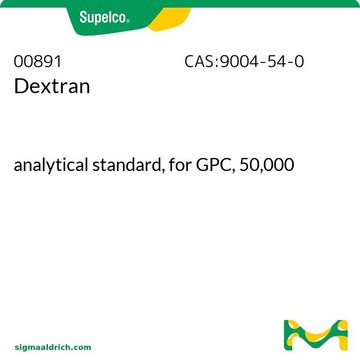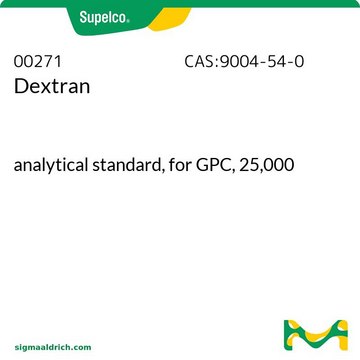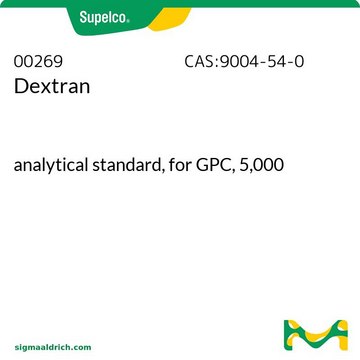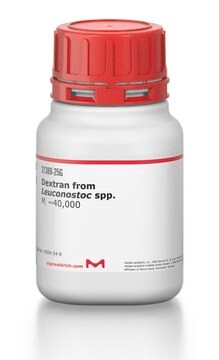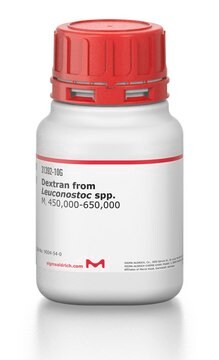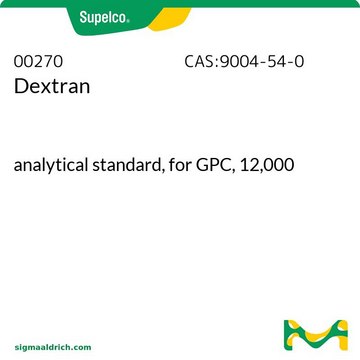31420
Dextran from Leuconostoc mesenteroides
for GPC, analytical standard, Mw 50,000
About This Item
Recommended Products
grade
analytical standard
for GPC
Quality Level
mol wt
Mn ~35,000
Mp ~45,000
Mw ~50,000
analyte chemical class(es)
oligosaccharides
technique(s)
gel permeation chromatography (GPC): suitable
Mw/Mn
~1.43
application(s)
food and beverages
format
neat
SMILES string
O1C(C(C(C(C1CO)O)O)O)OCC2OC(C(C(C2O)O)O)OCC(O)C(O)C(O)C(O)C=O
InChI
1S/C18H32O16/c19-1-5(21)9(23)10(24)6(22)3-31-17-16(30)14(28)12(26)8(34-17)4-32-18-15(29)13(27)11(25)7(2-20)33-18/h1,5-18,20-30H,2-4H2
InChI key
FZWBNHMXJMCXLU-UHFFFAOYSA-N
Looking for similar products? Visit Product Comparison Guide
General description
Dextran from Leuconostoc mesenteroides (Mw: 50,000) may be used as an analytical standard to calibrate the column for gel permeation chromatography (GPC).
Application
Storage Class Code
11 - Combustible Solids
WGK
WGK 2
Personal Protective Equipment
Choose from one of the most recent versions:
Already Own This Product?
Find documentation for the products that you have recently purchased in the Document Library.
Customers Also Viewed
Our team of scientists has experience in all areas of research including Life Science, Material Science, Chemical Synthesis, Chromatography, Analytical and many others.
Contact Technical Service
